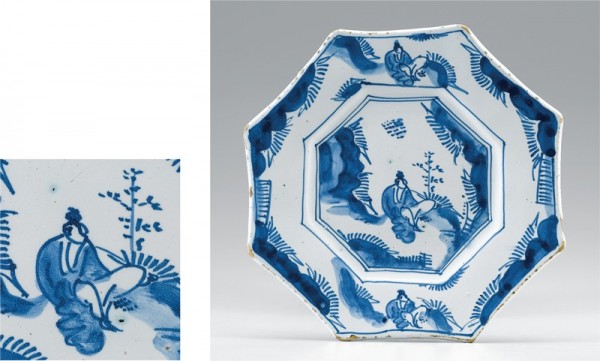
Plate, England, 1675–1695. Tin-glazed earthenware. W. 8". (Courtesy, Frederick and Anne H. Vogel; unless otherwise noted, all photos by Gavin Ashworth.) Figures 1–8 demonstrate the consistency of the English Chinese Scholar pattern and suggest the types of plates and vessels on which it survives. The man wears a robe and unusual headgear—perhaps a feather, a floppy hat, a turban, or a single strand of hair. Sketchily painted in blue or purple on a white tin-glazed ground, he is surrounded by spiky bushes, budding branches, and craggy rocks. The horizon descends from one side or the other made up of jagged cliffs, clouds, or other indeterminate swaths of color.
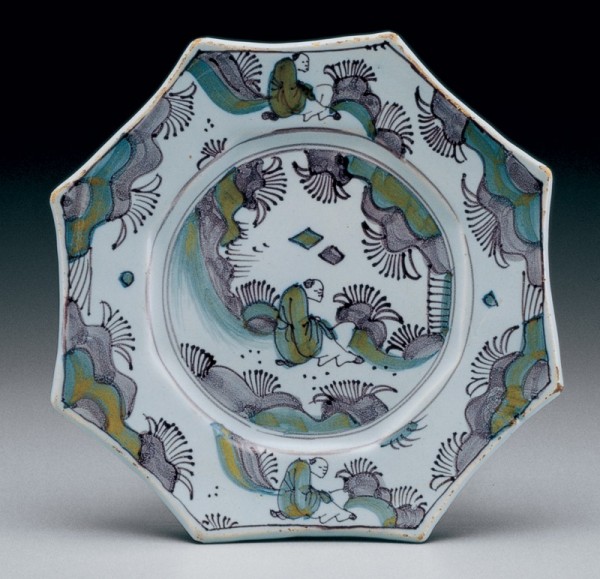
Plate, England, 1675–1695. Tin-glazed earthenware. W. 7 1/4". (Chipstone Foundation.)
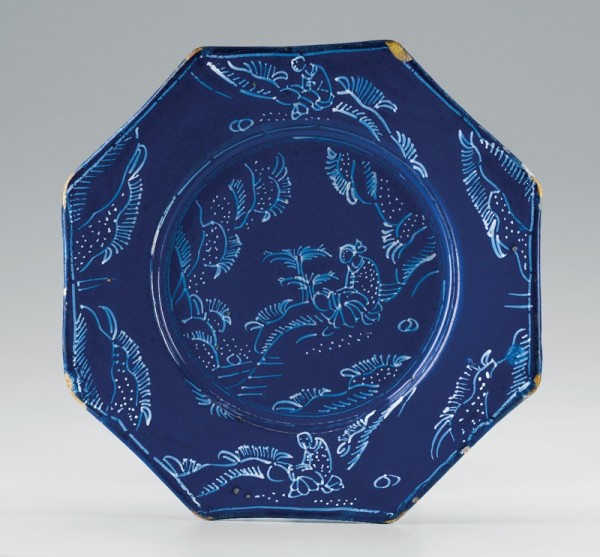
Plate, England, 1675–1695. Tin-glazed earthenware. W. 8". (Courtesy, Frederick and Anne H. Vogel.)
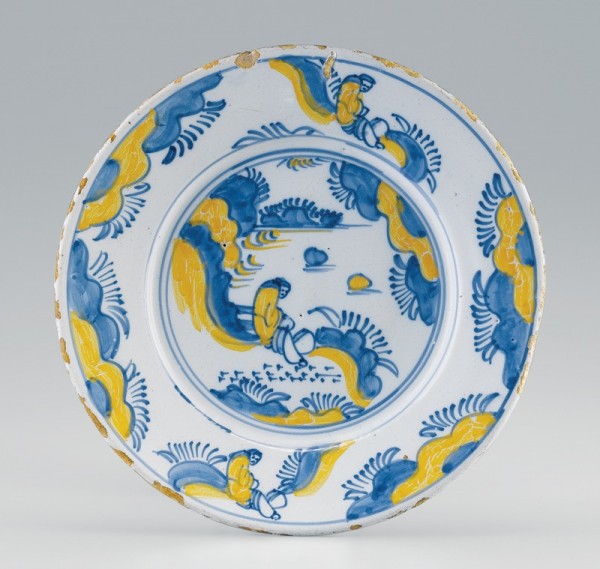
Plate, England, 1675–1695. Tin-glazed earthenware. D. 8 1/2". (Courtesy, John H. Bryan.)
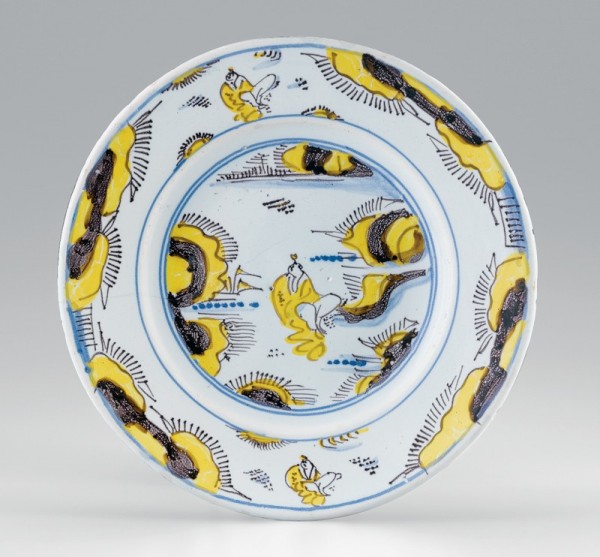
Plate, England, 1675–1695. Tin-glazed earthenware. D. 8 1/2". (Courtesy, John H. Bryan.)
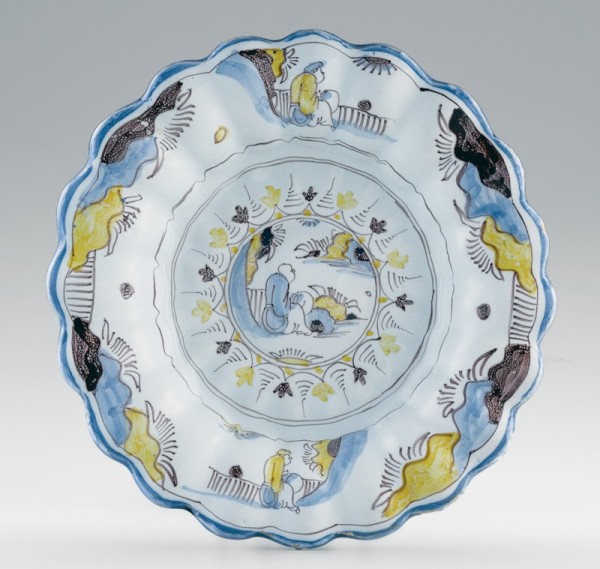
Dish, England, 1675–1695. Tin-glazed earthenware. D. 8 1/2". (Private collection.)
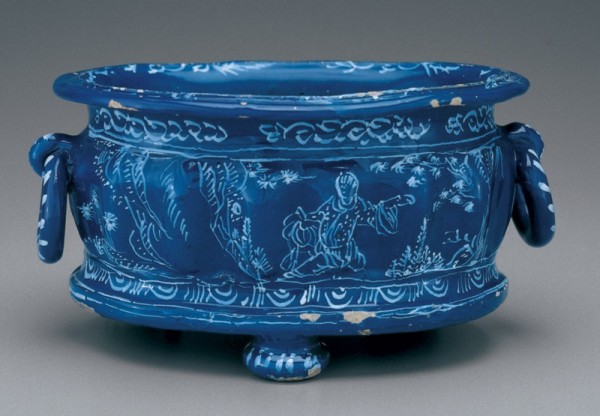
Cistern, England, 1675–1695. Bleu persan tin-glazed earthenware. L. 10". (Chipstone Foundation.)
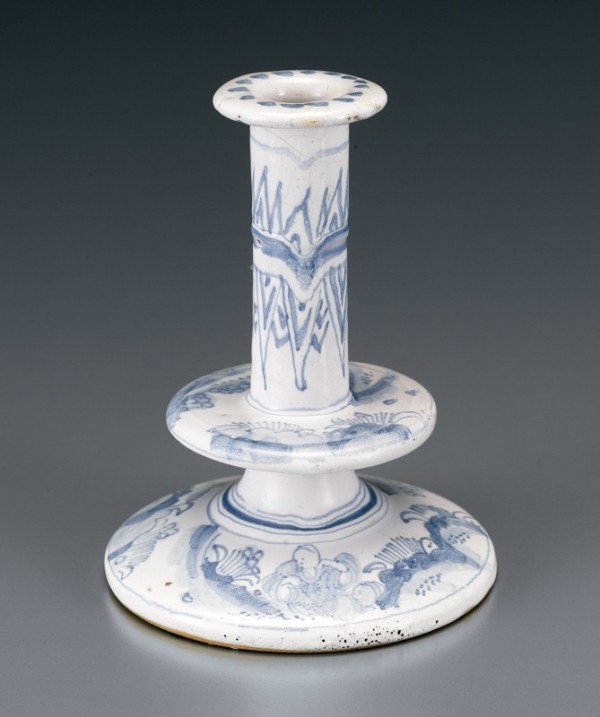
Candlestick, England, 1675–1695. Tin-glazed earthenware. H. 6". (Chipstone Foundation.)
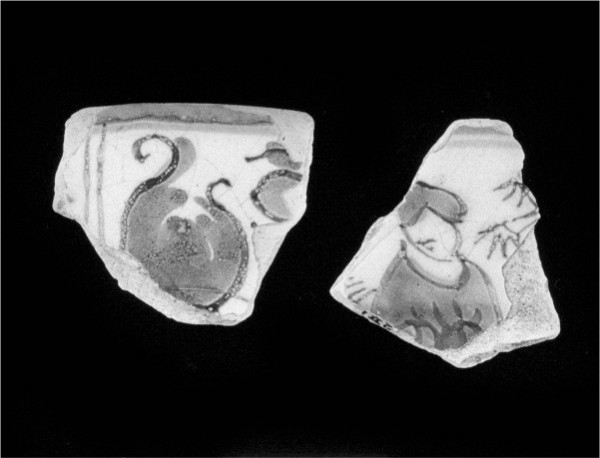
Dish fragments, probably England, 1675–1695. Tin-glazed earthenware. (Courtesy, Colonial Williamsburg.) Excavated at the William Finnie House Site, Williamsburg, Virginia.
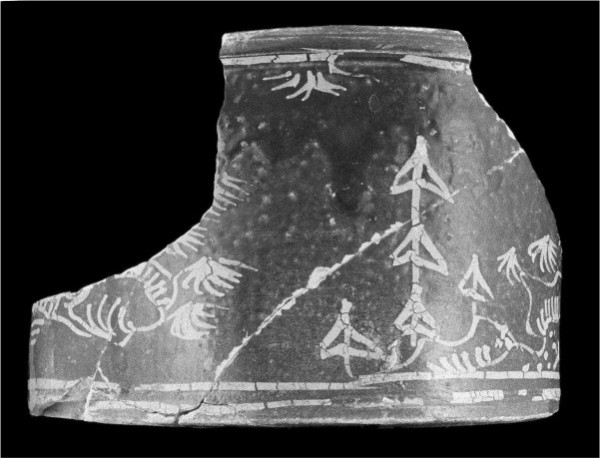
Meat pot fragment, England, 1680–1700. Tin-glazed earthenware. (Courtesy, Colonial Williamsburg.) Excavated at the domestic site adjacent to the Chiswell-Bucktrout House Site, Williamsburg, Virginia.
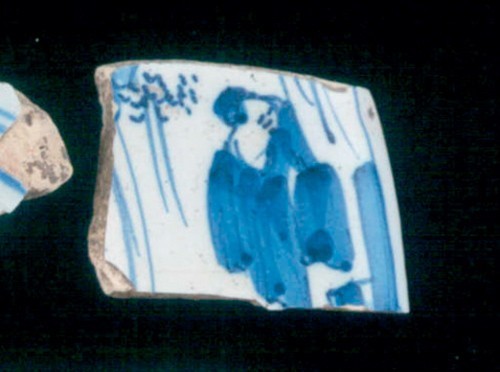
Dish fragment, the Netherlands, 1670–1700. Tin-glazed earthenware. (Courtesy, New York State Museum, Albany, NY, New York State Department of Education; photo, Joseph Levy.) Excavated at Fort Orange, New York.

Dish fragment, the Netherlands, 1600–1650. Tin-glazed earthenware (majolica). (Courtesy, New York State Museum, Albany, NY, New York State Department of Education; photo, Joseph Levy.) Excavated at Fort Orange, New York. This dish is tin-glazed on the front but features a lead glaze on the back. The edges of this large fragment have been carefully ground down, suggesting that early owners discarded the rim, perhaps after part of it broke, and salvaged the central circular reserve as wall decoration.
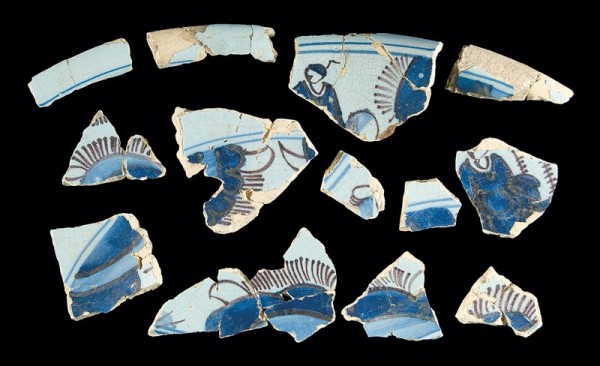
Dish fragments, England, 1675–1690. Tin-glazed earthenware. (Courtesy, Old Berwick Historical Society.) Excavated at the Lt. Humphrey Chadbourne Jr. Site, South Berwick, Maine, by Emerson W. Baker. The extensive Chadbourne estate was destroyed in 1690 by French and Native forces in the Salmon Falls Raid, an early encounter in King William’s War.
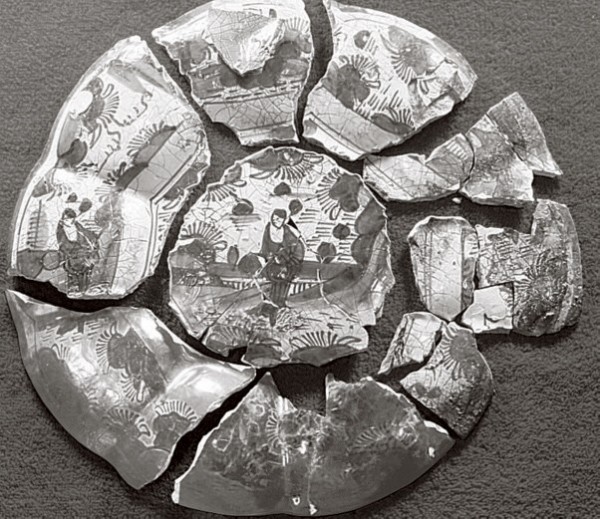
Lobed dish, England or the Netherlands, 1675–1690. Tin-glazed earthenware. (Courtesy, Saco Museum.) Excavated at the Richard Hitchcock Homestead at Biddeford Pool, Maine, by Emerson W. Baker. Discolored by fire during the Salmon Falls Raid of 1690, this dish was owned by a family who, though much less wealthy than the Chadbournes, also owned several pieces of tin-glazed earthenware, among other imported goods.
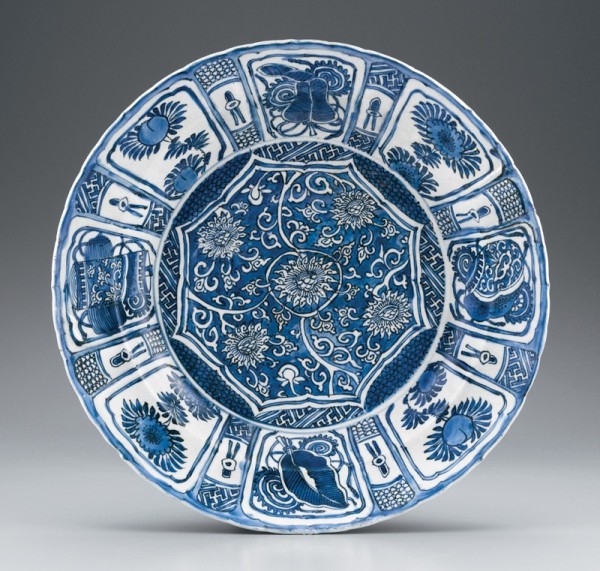
Dish, China, 1573–1619. Hard-paste porcelain, decorated in the so-called Wan Li or kraak pattern. D. 15". (Chipstone Foundation.)

Vase, China, 1635–1645. Hard-paste porcelain. H. 12 3/4". (Courtesy, Rijksmuseum, Amsterdam; Gift of J. G. Fontein, 1924.)
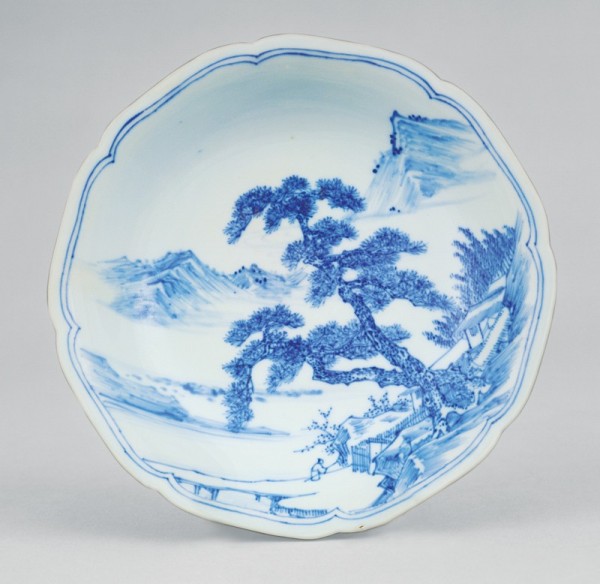
Dish, China, 1645–1650. Hard-paste porcelain. D. 6 5/8". (Private collection.)
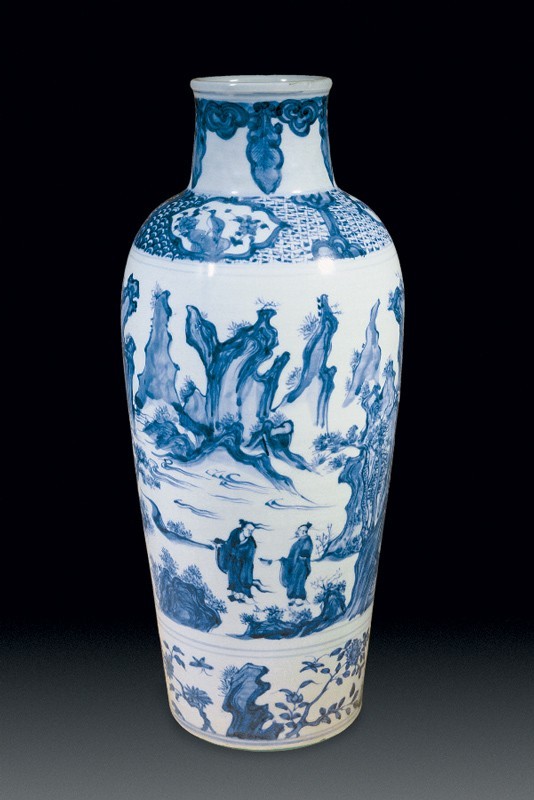
Vase, China, 1645–1660. Hard-paste porcelain. H. 15 3/8". (Private collection.)
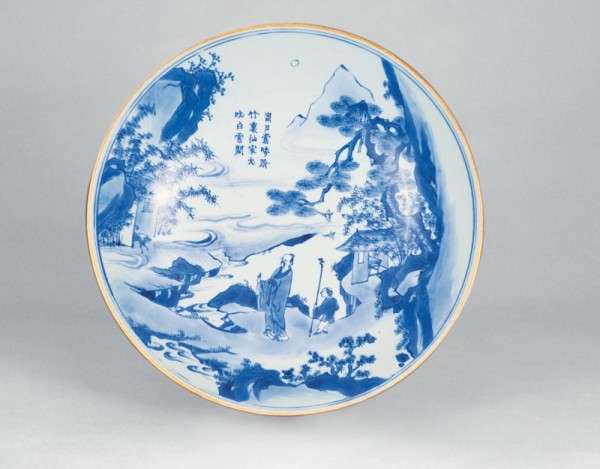
Dish, China, 1650–1660. Hard-paste porcelain. D. 13 7/8". (Private collection.)

Dish, China, ca. 1670. Hard-paste porcelain, decorated in the Master of the Rocks style. D. 10 7/8". (Private collection.)
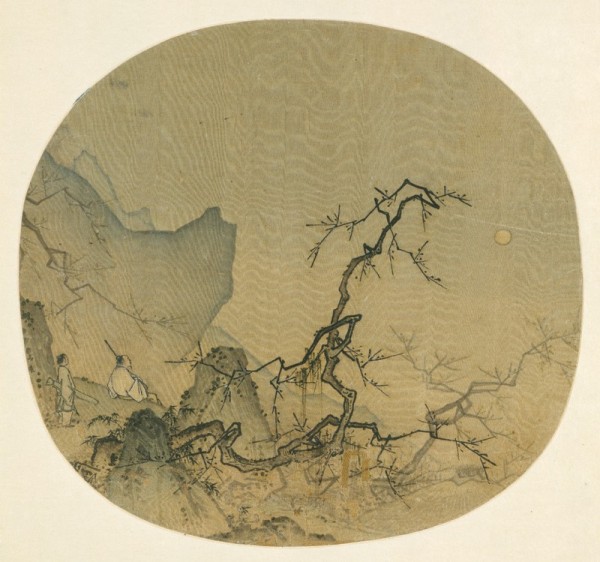
Ma Yuan (Chinese, active ca. 1190–1225), Viewing Plum Blossoms by Moonlight, Southern Song dynasty (1127–1279), fan mounted as an album leaf. Ink and color on silk. 9 7/8" x 10 1/2". (Courtesy, The Metropolitan Museum of Art, Gift of John M. Crawford Jr., in honor of Alfreda Murck, 1986 [1986.493.2].)
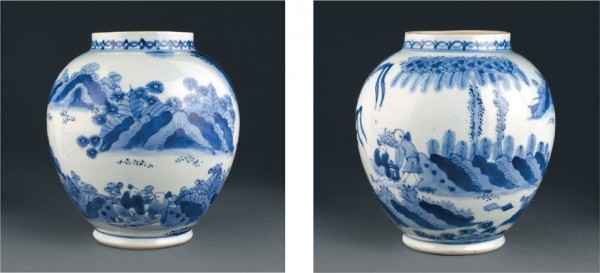
Jar, Arita, Japan, 1660–1680. Hard-paste porcelain. H. 6 5/8". (Courtesy, Ashmolean Museum of Art and Archaeology, Oxford, Reitlinger Gift.)
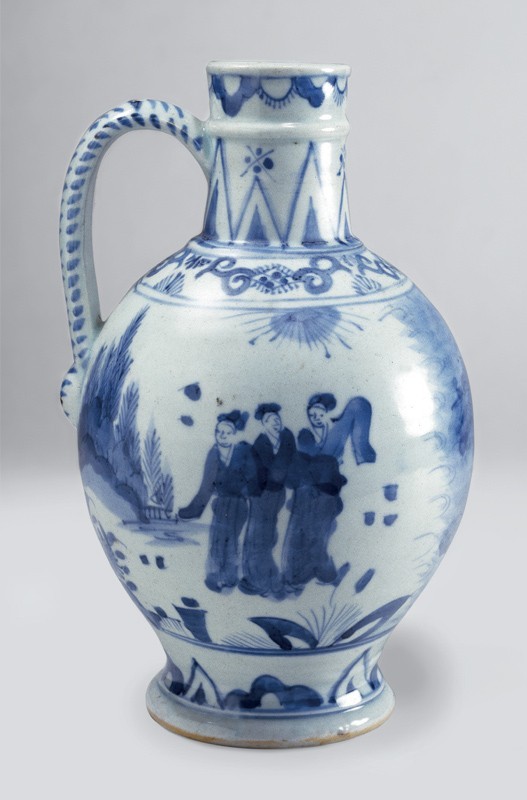
Ewer, Japan, 1660–1680. Hard-paste porcelain. H. 10". (Courtesy, Ashmolean Museum of Art and Archaeology, Oxford, Reitlinger Gift.)
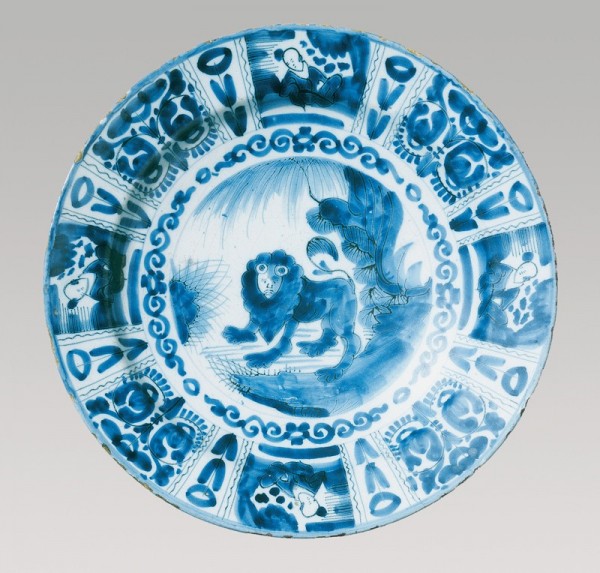
Dish, the Netherlands, ca. 1660. Tin-glazed earthenware. D. 11 3/4". (Courtesy, Philadelphia Museum of Art, Bequest of Emmeline Reed Bedell for the Bradbury Bedell Memorial Collection.)
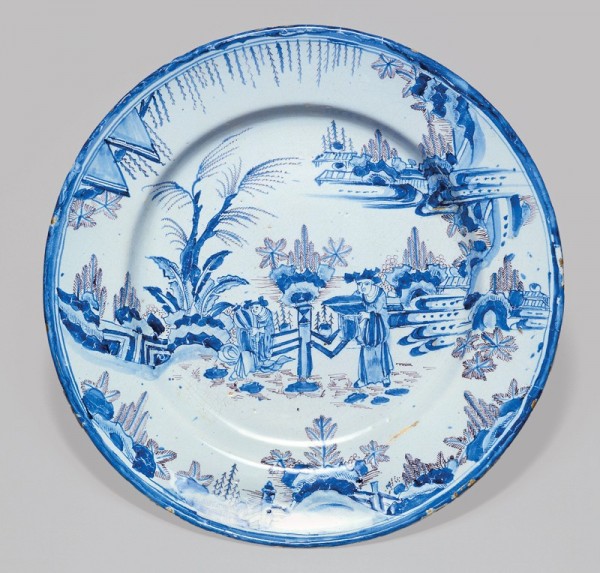
Dish, Nevers, France, 1670–1690. Tin-glazed earthenware. D. 16 1/8". (© The Fitzwilliam Museum, Cambridge.)
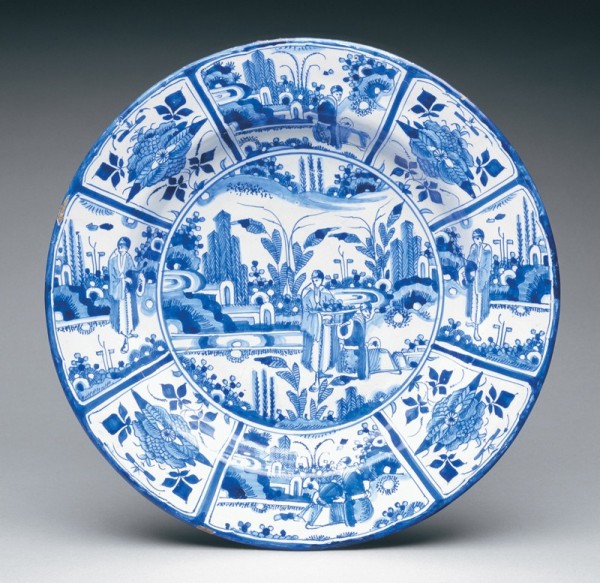
Plate, probably Frankfurt, Germany, 1690–1720. Tin-glazed earthenware. D. 15 1/2". (Courtesy, Milwaukee Art Museum, Gift of Gabriele Flagg Pfeiffer.)
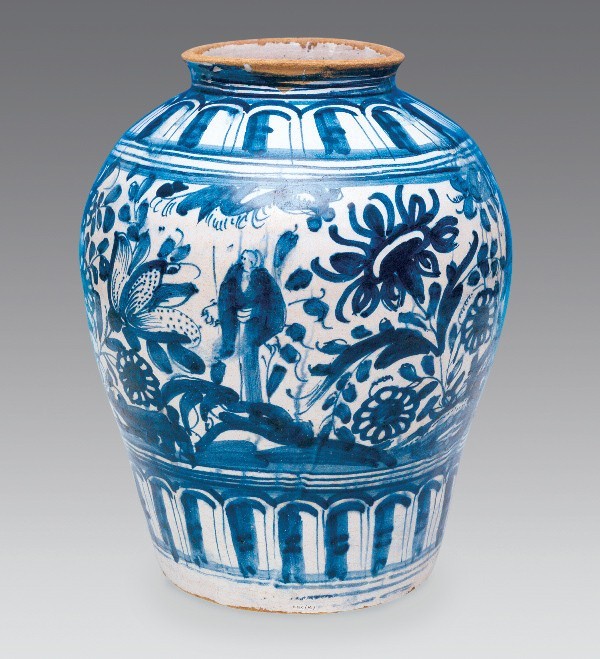
Jar, London, England, 1658. Tin-glazed earthenware. H. 12 3/4". (Courtesy, Pharmaceutical Society of Great Britain, KAC/P1.) The reverse features the date, 1658, and the coat of arms of the Society of Apothecaries.
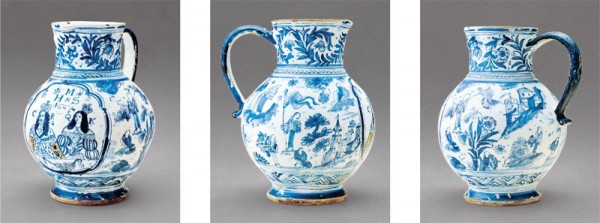
Jug, probably Southwark, London, England, 1662. Tin-glazed earthenware. H. 11 1/2". Mark, inscribed on the shoulder: M / HS 1662. (Courtesy, Longridge Collection.)
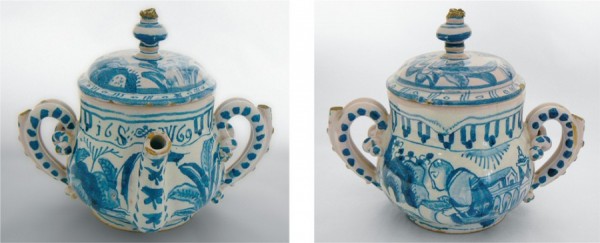
Posset pot, London, England, 1669. Tin-glazed earthenware. H. 4 5/8". Mark, inscribed on neck: 16 / S W / 69. (Courtesy, Castle Museum, Norwich.) The image on the right shows the Chinese Scholar motif.

Caudle cup, London, England, 1678. Tin-glazed earthenware. H. 4". (Private collection.)

Dish, England, 1673. Tin-glazed earthenware. D. 22 3/8". (Courtesy, Longridge Collection.) Note the Chinese Scholar motif in every other reserve around the rim. A sherd that appears to have the same pattern around the rim was excavated in Williamsburg, Virginia, and is illustrated in Ivor Noël Hume, Early English Delftware from London and Virginia (Williamsburg, Va.: Colonial Williamsburg Foundation, 1977), p. 94, fig. XV.

Covered punch bowl, England, 1675–1700. Tin-glazed earthenware. H. 15 1/2". (Private collection.)
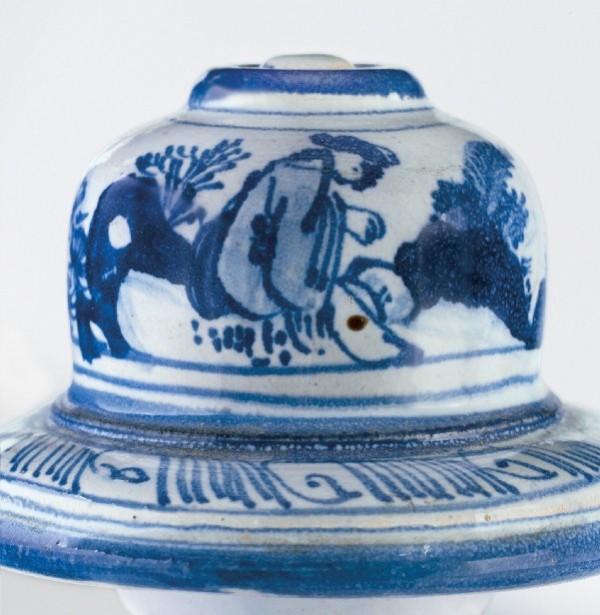
Detail of the Chinese Scholar figure on the finial of the punch bowl illustrated in fig. 32.

Plate, London, England, 1675. Tin-glazed earthenware. D. 8 3/8". Mark, inscribed on the reverse: C / TI / 1675. (Current location unknown.) Illustrated in Louis L. Lipski and Michael Archer, Dated English Delftware: Tin-glazed Earthenware, 1600–1800 (London: Philip Wilson Publishers for Sotheby’s Publications, 1984), p. 34, no. 138.
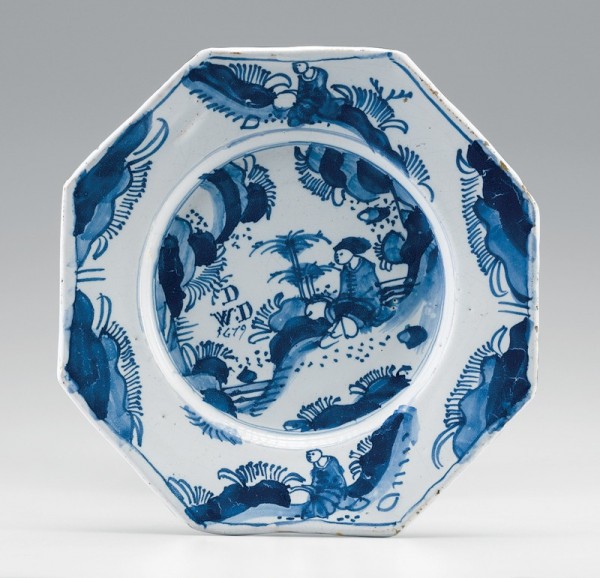
Plate, England, 1679. Tin-glazed earthenware. D. 7 5/8". (Courtesy, John H. Bryan.) While the scene inside the central reserve of the Chinese Scholar plates is usually asymmetrical, the rims are generally symmetrical. Often one or two quickly painted lines mark the central horizon where the pattern of spiky foliage and amorphous rocks on the top rim meets the repeated pattern on the bottom rim. This plate is one in a set of three featured in Lipski and Archer, Dated English Delftware, p. 51, nos. 143a, b.
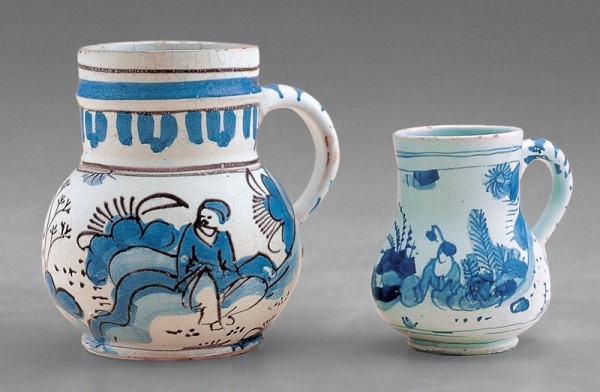
Mugs, London, Brislington, or Bristol, England, 1680–1700. Tin-glazed earthenware. H. of mug (left) 5 1/2". (Courtesy, Longridge Collection.)
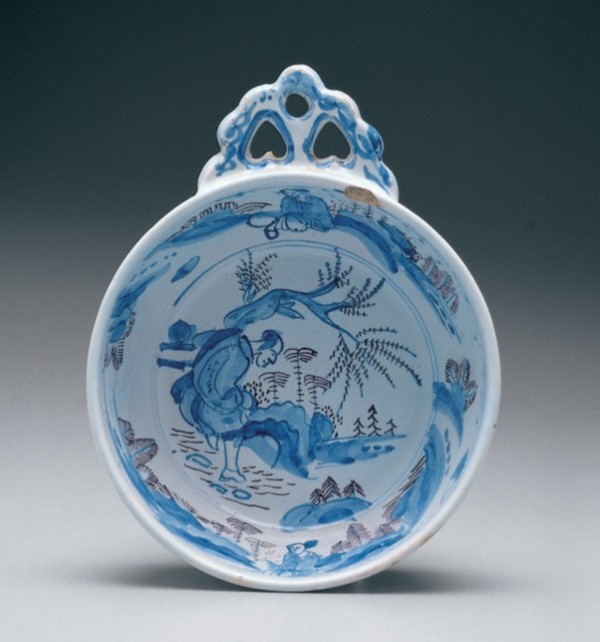
Porringer, England, 1675–1695. Tin-glazed earthenware. H. 7". (Chipstone Foundation.) The Chinese Scholar, dipping his toe in the stream, wears a European-style shoe.

Plate, probably Southwark, London, England, 1630–1640. Tin-glazed earthenware. D. 11 3/4". (Chipstone Foundation.)
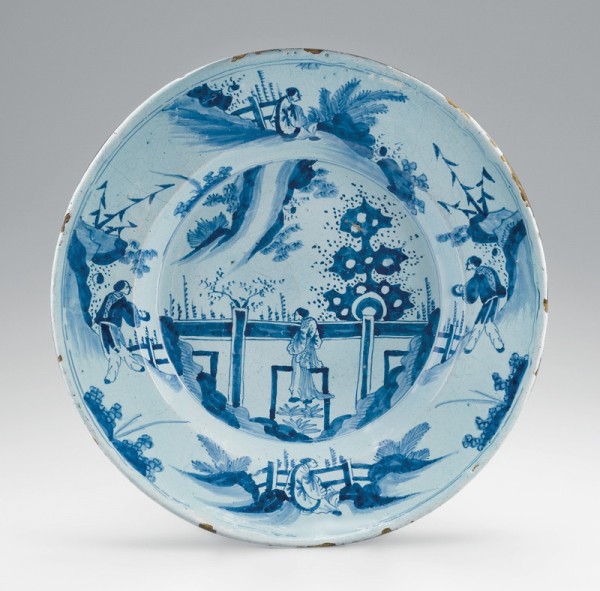
Charger, 1675–1700, England. Tin-glazed earthenware. D. 15 1/4". (Private collection.) This large Transitional-style charger depicts a scholar’s rock, a dramatic geological formation traditionally used by Chinese thinkers to aid their contemplation of the beauty in natural chaos. This anglicized scholar’s rock has three symmetrical, graduated tiers with evenly spaced holes; this symmetry would have been an anathema to its original Chinese viewers. The overall composition of the charger is similarly hybrid. It features five sage figures whose details and composition capture the exotic feel of Chinese originals, but the overall arrangement of the scenes in relation to one another conforms to European conventions of symmetry. One figure occupies each of the four cardinal points, and the head of the fifth figure marks the exact center point of the whole plate. By applying imagery that would have been considered foreign and exotic by English observers onto the conventional four-pointed grid of European tradition, this charger and others like it offered newly fashionable chinoiserie in a format familiar to most consumers.
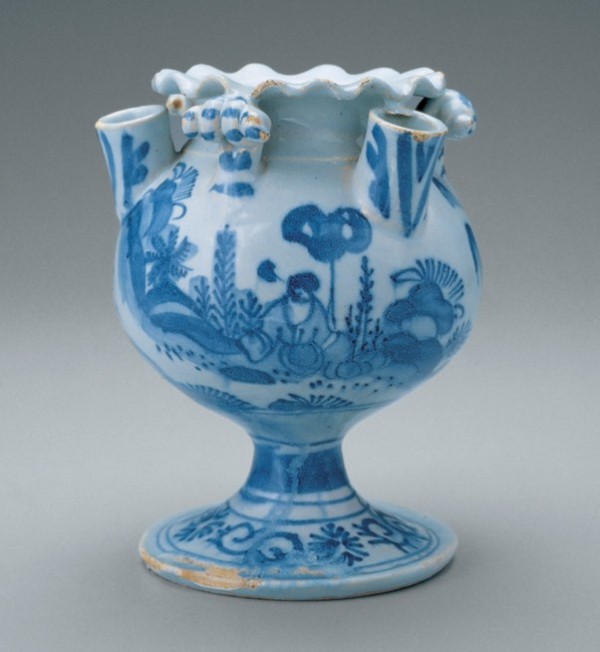
Flower vase, England, 1675–1695. Tin-glazed earthenware. H. 6 1/8". (Chipstone Foundation.)

Caudle cup, England, 1670–1690. Tin-glazed earthenware. H. 4", D. 6". (Courtesy, Frederick and Anne H. Vogel.) The decoration on this caudle cup shows curious intercultural mixing. The scene derives from the Ming Transitional style and the figures are seated much like the Chinese Scholar, but they are dressed in English costume.
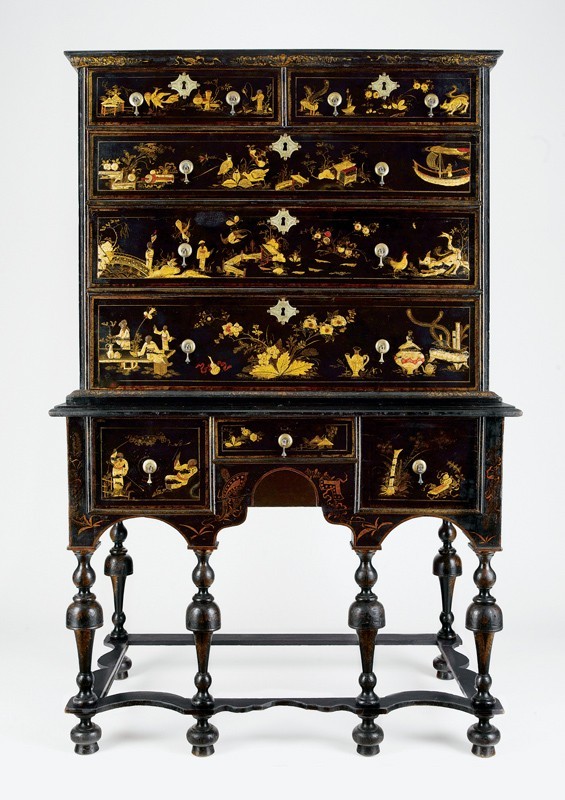
High chest, Boston, Massachusetts, 1712–1725. Pine with japanning, probably by Nehemiah Partridge (case signed “Park”). H. 61". (Chipstone Foundation.)
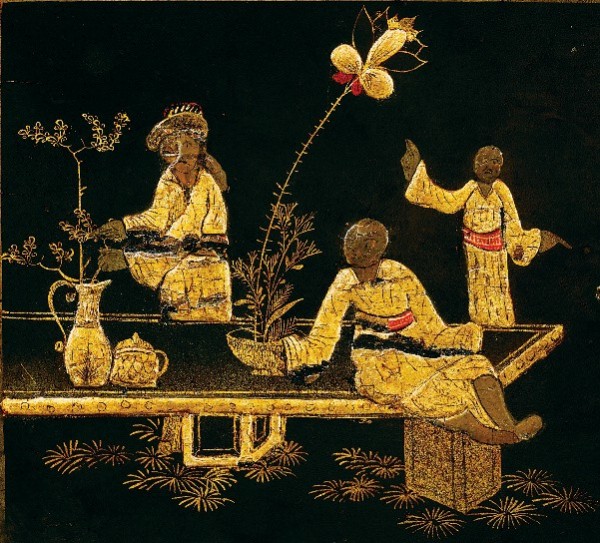
Detail of a drawer on the high chest illustrated in fig. 42.
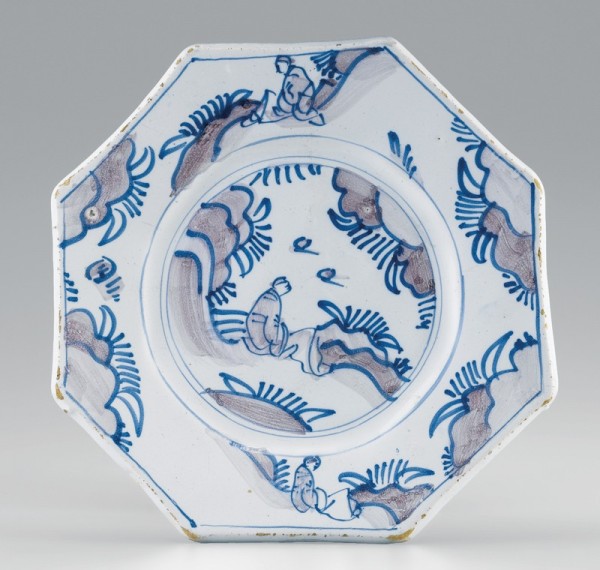
Plate, England, 1675–1695. Tin-glazed earthenware. D. 7 5/8". (Courtesy, John H. Bryan.)

Plate, England, 1675–1695. Tin-glazed earthenware. D. 7 1/2". (Courtesy, Historic Deerfield, Inc.; photo, Amanda Merullo.)
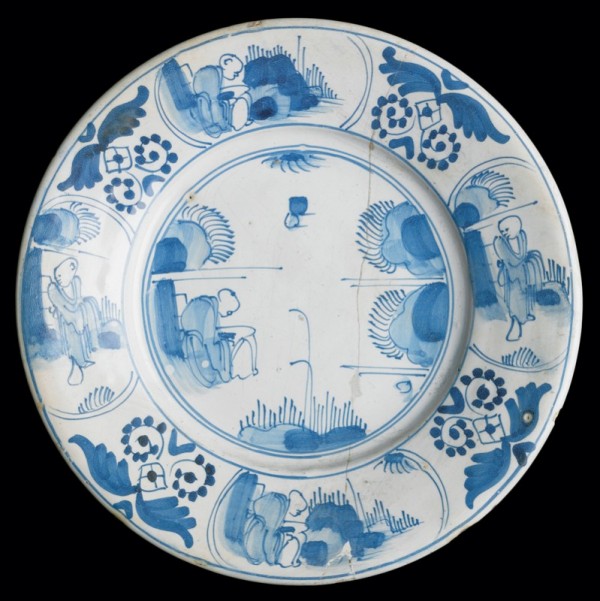
Plate, London, England, ca. 1680. Tin-glazed earthenware. D. 8 1/2". (Courtesy, Museum of London.)
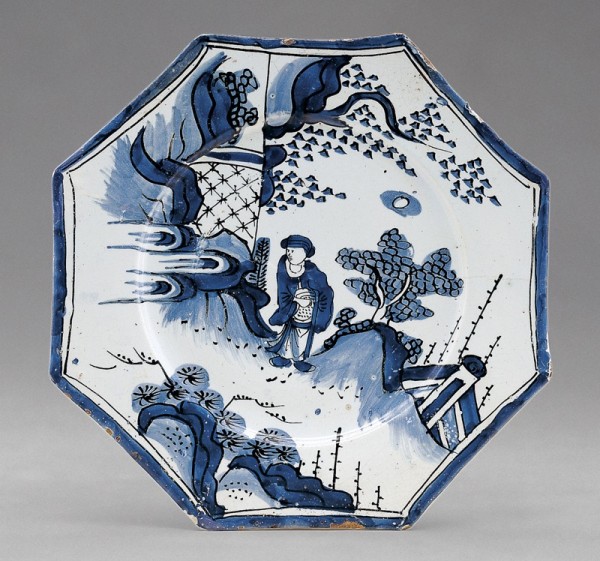
Plate, probably Brislington, England, 1675–1690. Tin-glazed earthenware. W. 10 3/8". (Courtesy, Longridge Collection.) Plates with no rim decoration, like this one, tend to feature somewhat more individualized figures painted in greater detail. Allover patterns were relatively unfamiliar to English tastes and may have been influenced by Japanese imports.

Plate, England, 1696. Tin-glazed earthenware. D. 8 3/4". (Courtesy, John H. Bryan.)
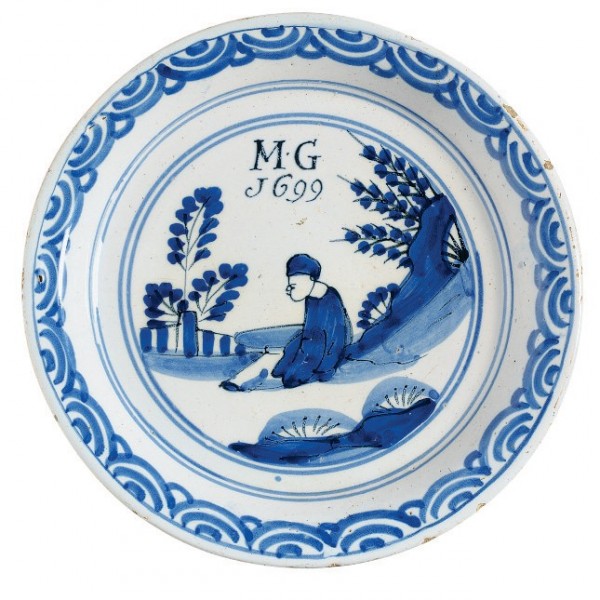
Plate, England, 1699. Tin-glazed earthenware. D. 8 5/8". (Courtesy, Sotheby’s, New York.)
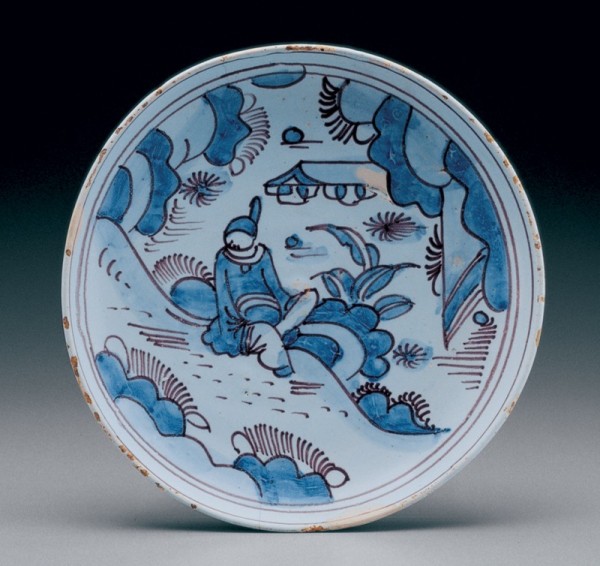
Plate, England, ca. 1685. Tin-glazed earthenware. D. 8 1/2". (Chipstone Foundation.)
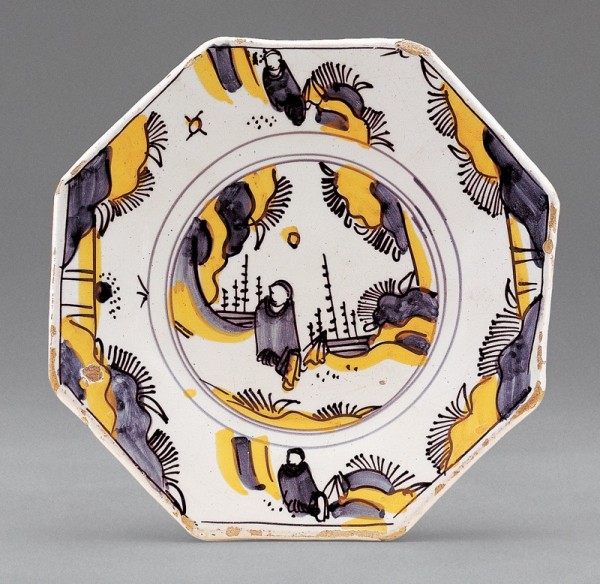
Plate, England, 1675–1695. Tin-glazed earthenware. W. 7 7/8". (Courtesy, Longridge Collection.)
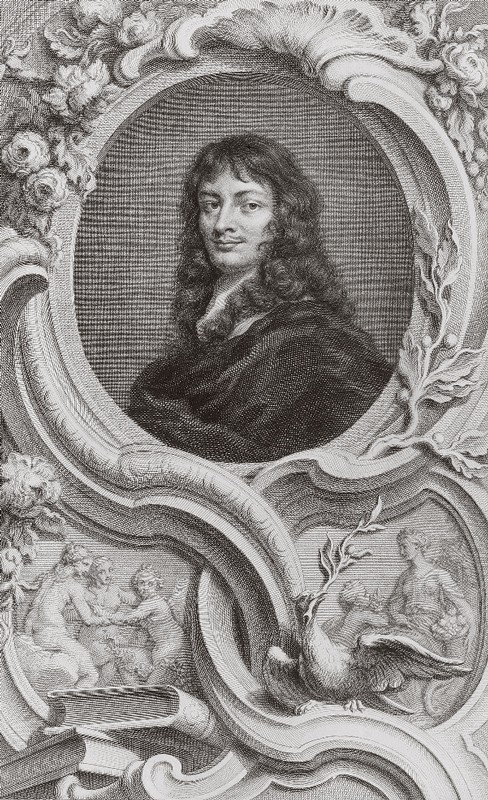
Jacobus Houbraken, after Sir Peter Lely, Sir William Temple, line engraving, published by J. and P. Knapton, 1738. Plate 14 5/8" x 9 3/8". (Courtesy, National Portrait Gallery, London, given by Sir Herbert Henry Raphael, 1st Bt, 1916. NPG D19408.)

Armchair, Boston, Massachusetts, ca. 1700. Maple and cane. 50 3/4" x 27". (Chipstone Foundation.)
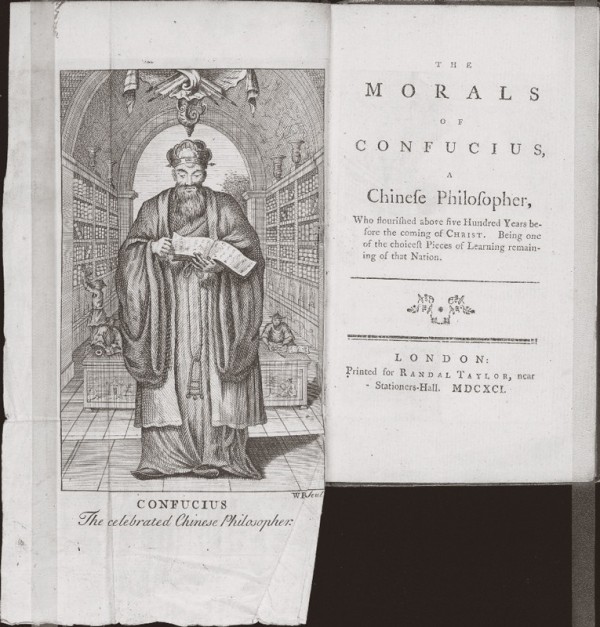
Frontispiece, The Morals of Confucius (London: Printed for Randal Taylor, 1691). (Courtesy, Beinecke Rare Book and Manuscript Library, Yale University.)
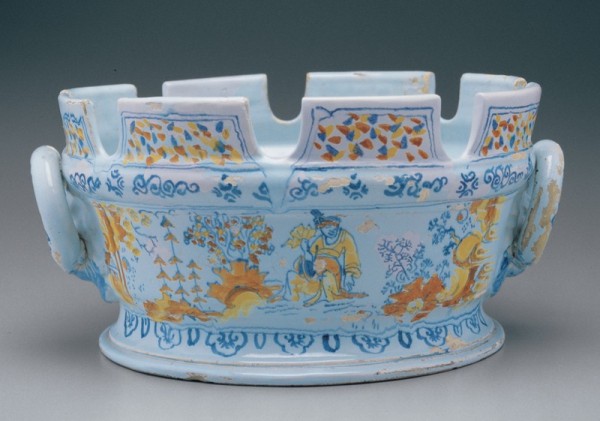
Monteith, England, ca. 1690. Tin-glazed earthenware. D. 12". (Chipstone Foundation.)

Monteith, George Garthorne, London, England, 1688. Silver with flat-chased decoration. D. 11 3/8". (Courtesy, Milwaukee Art Museum, purchase, Virginia Booth Vogel Acquisition Fund.)
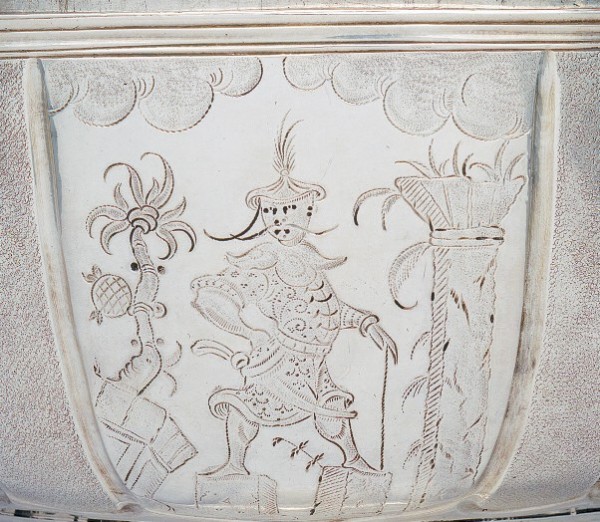
Detail of the monteith illustrated in fig. 56.
